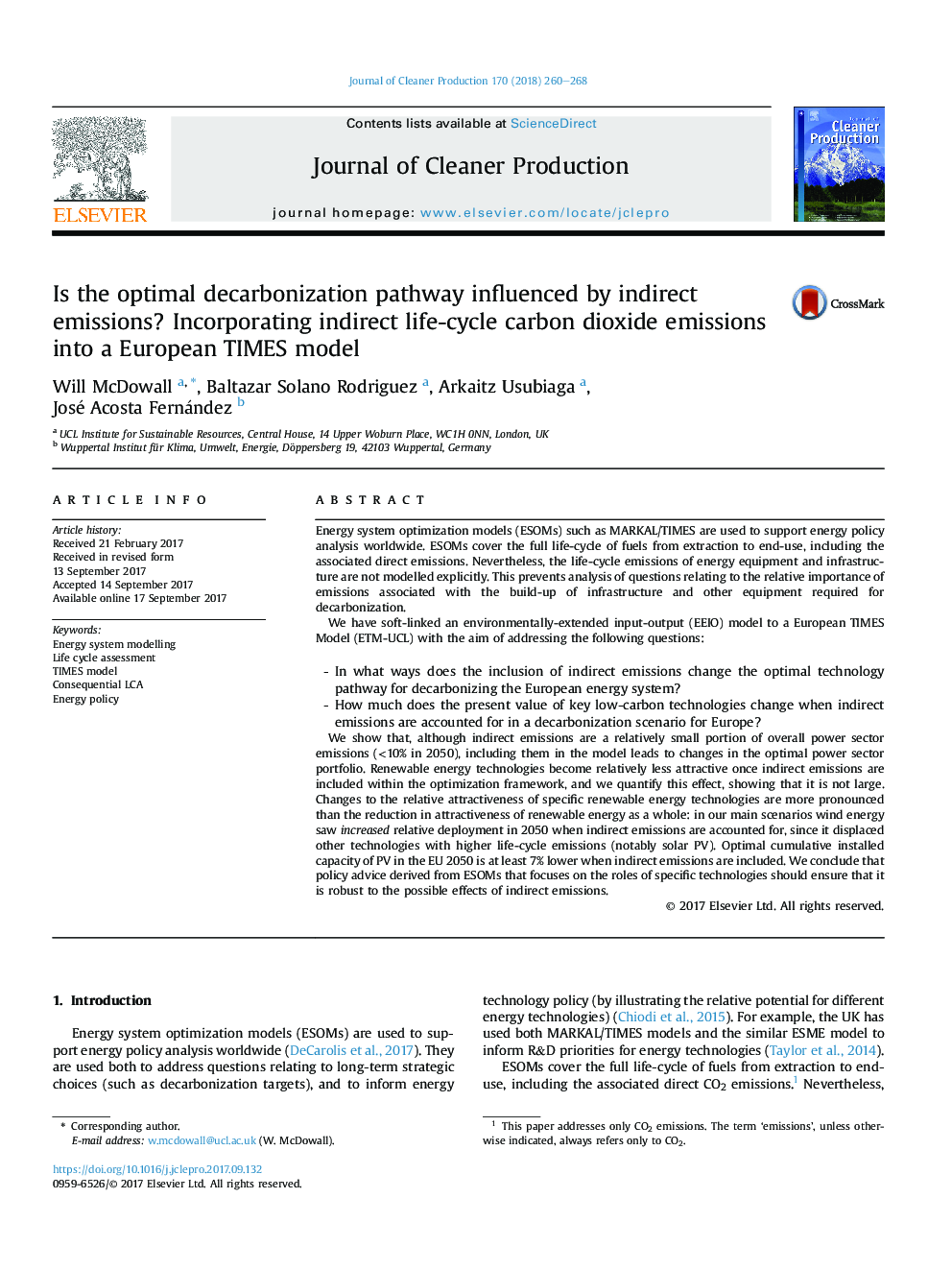| Article ID | Journal | Published Year | Pages | File Type |
|---|---|---|---|---|
| 5479214 | Journal of Cleaner Production | 2018 | 9 Pages |
Abstract
We show that, although indirect emissions are a relatively small portion of overall power sector emissions (<10% in 2050), including them in the model leads to changes in the optimal power sector portfolio. Renewable energy technologies become relatively less attractive once indirect emissions are included within the optimization framework, and we quantify this effect, showing that it is not large. Changes to the relative attractiveness of specific renewable energy technologies are more pronounced than the reduction in attractiveness of renewable energy as a whole: in our main scenarios wind energy saw increased relative deployment in 2050 when indirect emissions are accounted for, since it displaced other technologies with higher life-cycle emissions (notably solar PV). Optimal cumulative installed capacity of PV in the EU 2050 is at least 7% lower when indirect emissions are included. We conclude that policy advice derived from ESOMs that focuses on the roles of specific technologies should ensure that it is robust to the possible effects of indirect emissions.
Related Topics
Physical Sciences and Engineering
Energy
Renewable Energy, Sustainability and the Environment
Authors
Will McDowall, Baltazar Solano Rodriguez, Arkaitz Usubiaga, José Acosta Fernández,
